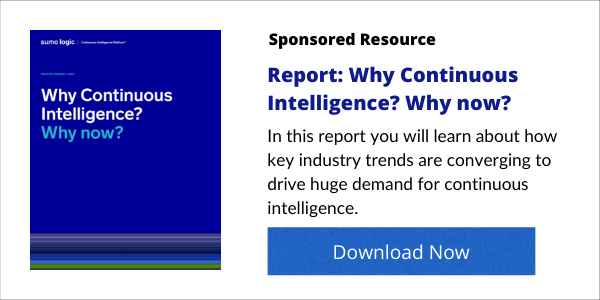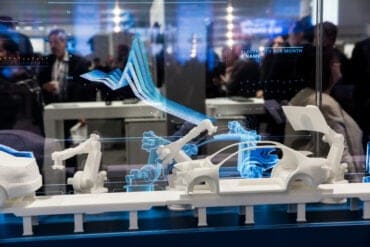
The benefits from application modernization extend far beyond efficiency and security to ease of management and better uptime.
The eternal changes in today’s business environment have enterprise organizations taking serious looks at application modernization. It’s likely that if a company is more than 10 years old, they already have embarked on application modernization or they will soon. Then there are the old companies that won’t modernize and just will slip into oblivion.
Application modernization essentially is the movement of legacy applications to today’s newer architectures. Or, it may be the replacement of such apps. Modern application architectures typically are cloud-based and utilize containers, as well as Kubernetes for managing those containers.
Watch Video Now: Digital Complexity and How to Address ItAging legacy applications present challenges for organizations as their industries, customers, and employees embrace analytics, automation, mobility, and flexibility. The most notable of those legacy apps are 50-year-old mainframe Cobol apps in environments that are difficult to maintain. Yet dozens or hundreds of home-grown custom applications in companies are legacy as well. Those have been written to serve a single, finite business purpose and running on aging, dedicated systems.
See Also: Continuous Intelligence Insights
Why do application modernization?
Some of the benefits from modernization are readily apparent to IT and enterprise leaders:
- Hardware platforms and application code may be old and hard to maintain or update, while new architectures enable scalability and portability.
- Unique home-grown applications require special user training making it difficult to bring on new employees while standardized, cloud-based applications offer familiarity and ease of use.
- Legacy apps may be ripe for security breaches. Today’s cloud-based apps are more likely to leverage up-to-date security tools.
- Standardized and cloud computing platforms provide greater flexibility as businesses grow or shift direction with new locations, services and business partners.
- Use of cloud computing presents cost advantages over on-premise systems that require constant staff attention and expensive hardware and network upgrades.
- Use of containerized applications and code allow easier and timely rollout of new application features and patches.
- New architectures are better suited for the benefits found in DevOps and Agile environments.
- Hiring IT staff for modern architectures is easier than recruiting staff experienced with outdated proprietary systems.
Modern systems are core elements in digital transformation. Organizations need to keep pace with their competitors. Evidence of how quickly enterprises across the spectrum are adopting transformation can be found in a Statista report. It notes that worldwide spending on digital transformation will reach $2.3 trillion by 2023.

Digital transformation presents an opportunity not only to modernize applications but to embrace mobility and improve the experiences of employees and customers. It allows companies to offer new types of products, services and support options. Think “any time, any where, any device” access and information delivery.
Tomorrow’s benefits
All those benefits and trends cited above make a strong case for application modernization, cloud, containers and more.
Yet, there are reasons for modernization that may not be so obvious. Consider continuous intelligence. It presents the ability to have 24/7 insight into an organization’s IT systems, application performance, security status and business operations. CI continuously monitors in real time the health of systems and operations, supply chains, data security, facilities, and more. It can help to optimize performance and, of greater importance, avoid failures.
The key to CI’s success is its ability to learn what is normal activity and what may be aberrations in systems and business operations. Relying on knowledge bases drawn from human experiences and what CI tools learn over time, those tools can issue alerts to staff when something seems to signal a pending problem. In some cases, CI can be trained to automatically invoke pre-programmed remedies to head off or repair an issue.
The groundwork for CI
To understand the connection between application modernization and CI, let’s look at AIOps, the use of artificial intelligence to help manage IT systems. There’s growing interest among enterprise organizations in AIOps software.
That software offers two key benefits. It can automate some of the mundane tasks normally handled by the IT staff, and it can sift through the many alerts that overwhelm the human admins. Both capabilities help to free up the IT staff for more innovative work, such as exploring new applications and working with business clients.
The gotcha in AIOps today is that it doesn’t necessarily work with legacy applications and systems. Rather, it’s optimized for more standardized modern applications and architectures, even multi-cloud environments.
In most cases, those legacy apps present blind spots for AIOps and CI. Business and IT leaders may have great insight into 50, 60 or 75 percent of their systems, applications, and workflows. Yet, the data generated by the legacy systems may not fit into those AI-based tools. Such blind spots leave open the possibility of application failures, unhappy users and customers, or even costly security breaches.
We are now about a decade past the point where cloud computing was really proving itself as an alternative to on-premise data centers. It’s time for enterprises that have been holding back, getting by with “just OK” technology, to take the leap into modern applications.
Featured Resource: Continuous Intelligence and the Era of Real-Time, Data-Driven Business [Download Now]






